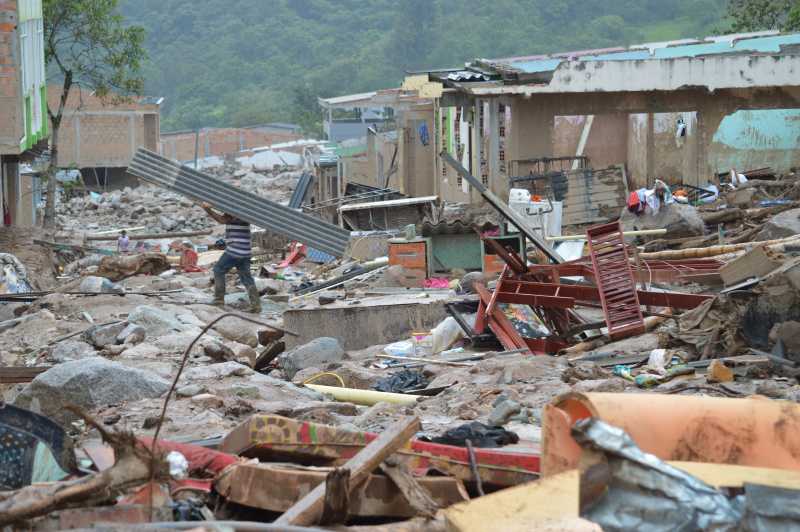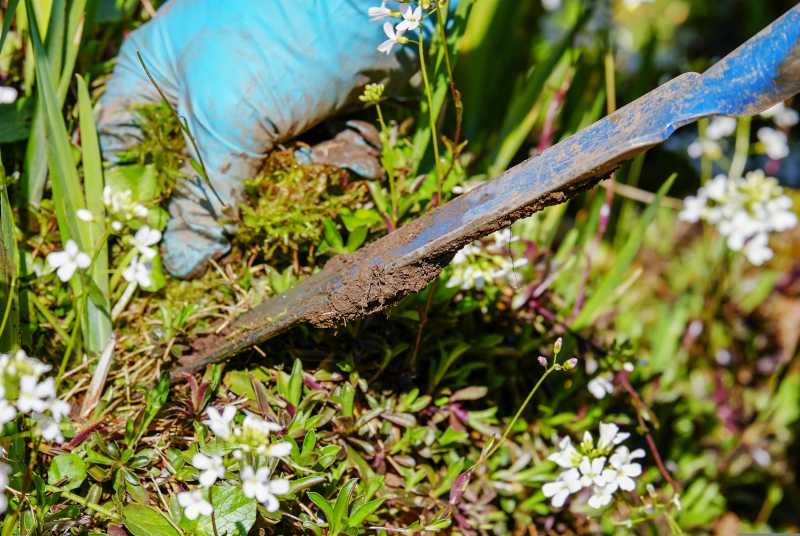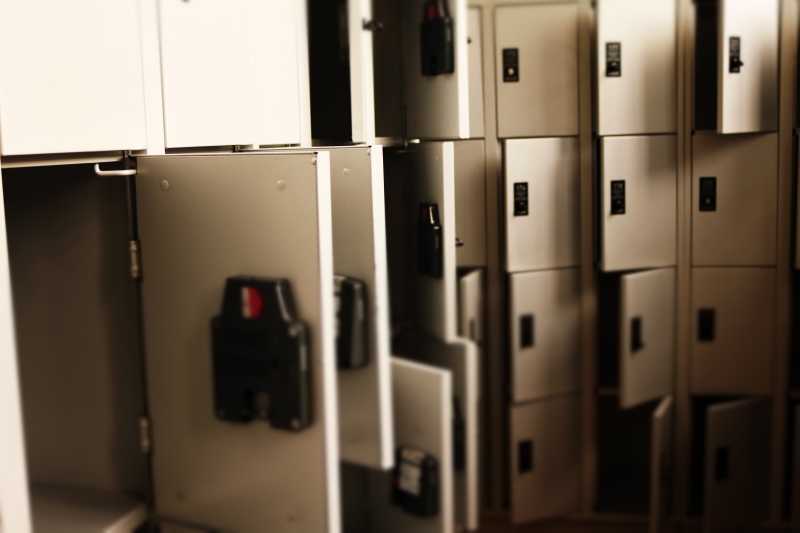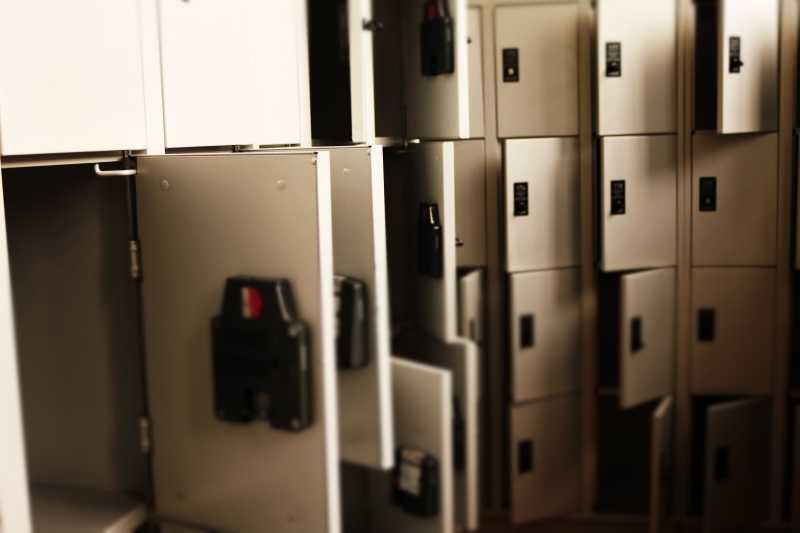When disaster strikes, the immediate response is crucial to mitigate the damage and start the recovery process. This is where the role of a restoration specialist comes into play. A restoration specialist, like those at Steamaster, is a professional trained to handle emergency situations such as water damage, fire and storm damage cleanup, mold removal, and more. They are the first responders when it comes to restoring your property to its pre-disaster condition. With their expertise in water damage restoration services, they can efficiently handle water removal and initiate the drying process to prevent further damage. They also have the skills to deal with fire and storm damage, ensuring a thorough cleanup and restoration of your property. So, if you’re in need of emergency restoration services, don’t hesitate to call Steamaster 24/7. Their restoration specialists are always ready to help you recover from any disaster.
Understanding the Role of a Restoration Specialist
A Restoration Specialist plays a crucial role in disaster recovery, providing essential services that help individuals and communities recover from various types of disasters, including fires, floods, and storms. These professionals are trained to handle a wide range of tasks, from cleaning up debris and salvaging personal belongings to restoring damaged structures and preventing further damage.
Restoration Specialists are often the first responders after a disaster, arriving on the scene to assess the damage and develop a plan for recovery. They work closely with homeowners, business owners, and insurance companies to determine the extent of the damage and the best course of action for restoration. This often involves a thorough inspection of the property, including the use of advanced moisture detection equipment to identify hidden water damage.
Once the damage has been assessed, Restoration Specialists begin the process of cleaning and restoring the property. This can involve a variety of tasks, depending on the nature of the disaster and the extent of the damage. For example, in the case of a fire, this might include smoke removal and fire damage remediation. In the case of a flood, it could involve water damage repair and mold remediation.
Restoration Specialists also play a key role in preventing further damage to the property. This can involve tasks such as boarding up windows, tarping roofs, and implementing measures to control moisture levels in the property. They also work to salvage and restore personal belongings whenever possible, using specialized cleaning and restoration techniques.
In addition to their technical skills, Restoration Specialists also provide emotional support to individuals and communities affected by disasters. They understand that disasters can be traumatic events, and they work to help their clients navigate the recovery process with compassion and empathy.
Restoration Specialists are also responsible for coordinating with other professionals involved in the disaster recovery process. This can include insurance adjusters, contractors, and public safety officials. They ensure that all parties are kept informed of the progress of the restoration and that all work is completed in accordance with local building codes and regulations.
In conclusion, the role of a Restoration Specialist in disaster recovery is multifaceted and essential. These professionals provide a range of services that help individuals and communities recover from disasters and return to normal life as quickly and efficiently as possible. Whether they are responding to a fire, flood, or storm, Restoration Specialists play a key role in helping people rebuild their lives after a disaster.
For more information about the services provided by Restoration Specialists, please visit our About Us page. If you have experienced a disaster and need assistance, please contact us to speak with a Restoration Specialist today.
The Importance of Disaster Recovery: A Brief Overview
Disasters, whether natural or man-made, can cause significant damage to homes, businesses, and communities. The aftermath of such events often leaves the affected areas in a state of disarray, with structures damaged, possessions lost, and lives disrupted. This is where the role of a restoration specialist becomes crucial. These professionals are trained to handle the complex process of disaster recovery, ensuring that the affected areas are restored to their pre-disaster conditions as quickly and efficiently as possible.
Restoration specialists play a pivotal role in disaster recovery. They are responsible for assessing the extent of the damage, formulating a comprehensive restoration plan, and executing the necessary repairs and clean-ups. Their expertise covers a wide range of disaster-related damages, including those caused by fires, floods, storms, and other catastrophic events.
One of the key services offered by restoration specialists is water damage repair. This involves the removal of water, drying of the area, and repair of any water-damaged structures. This process is critical in preventing further damage and potential health risks, such as mold growth.
Restoration specialists also handle fire damage remediation and smoke removal. This involves cleaning up the soot and smoke residue, repairing fire-damaged structures, and deodorizing the area to remove the lingering smell of smoke.
Another important service provided by these professionals is mold removal and remediation. Mold can pose serious health risks and can cause structural damage if left untreated. Restoration specialists are trained to identify and remove mold, ensuring that the affected area is safe and healthy once again.
In addition to these services, restoration specialists also offer move and pack out services to help homeowners and businesses protect their belongings during the restoration process. They also provide water leak location and moisture detection services to identify potential sources of water damage.
The role of a restoration specialist in disaster recovery is not just about repairing physical damage. It’s also about helping individuals and communities regain their sense of normalcy after a disaster. By restoring homes and businesses to their pre-disaster conditions, these professionals help affected individuals move forward and start anew.
In conclusion, the importance of disaster recovery cannot be overstated. It is a complex process that requires the expertise of trained professionals. Restoration specialists play a crucial role in this process, providing a wide range of services to help individuals and communities recover from disasters. Their work not only restores damaged structures but also helps restore lives.
The Initial Assessment: First Steps of a Restoration Specialist
In the wake of a disaster, the role of a restoration specialist is pivotal in helping individuals and communities recover and rebuild. The first step in this process is the initial assessment, a critical phase that sets the tone for the entire restoration project. This phase involves a thorough evaluation of the damage, determining the best course of action, and devising a comprehensive restoration plan.
The initial assessment begins with a detailed inspection of the affected area. This involves identifying the type and extent of the damage, whether it’s due to a fire, flood, mold, or other disaster. The restoration specialist must carefully document all damage for insurance purposes, taking photographs and making notes of all affected areas and items.
Next, the restoration specialist must determine the best course of action. This involves deciding whether items can be restored or if they need to be replaced. For instance, in the case of water damage, the specialist must assess whether drying and dehumidifying the area will suffice, or if more extensive water damage repair is necessary. Similarly, in the case of fire damage, the specialist must evaluate whether smoke removal and cleaning will restore the area, or if more extensive reconstruction is required.
Once the type and extent of the damage have been identified, the restoration specialist can devise a comprehensive restoration plan. This plan outlines the steps needed to restore the area to its pre-disaster condition. It includes a timeline for the restoration process, a list of necessary materials and equipment, and an estimate of the cost. This plan is then communicated to the property owner and the insurance company, ensuring everyone is on the same page.
In addition to devising the restoration plan, the specialist also coordinates with other professionals as needed. For instance, in the case of mold damage, the specialist may need to work with a mold remediation expert to ensure all mold is properly removed and the area is safe for habitation. Similarly, in the case of fire damage, the specialist may need to coordinate with construction professionals for any necessary reconstruction work.
The initial assessment is a crucial first step in the restoration process. It sets the stage for the work to come and ensures that the restoration project is well-planned and coordinated. By conducting a thorough initial assessment, the restoration specialist can ensure that the restoration process is as efficient and effective as possible, helping individuals and communities recover from disaster and return to normalcy as quickly as possible.
The Process of Damage Evaluation by Restoration Specialists
In the aftermath of a disaster, the role of a restoration specialist is critical in facilitating recovery and restoring normalcy. One of the key responsibilities of these professionals is damage evaluation, a process that involves assessing the extent of damage caused by the disaster and determining the necessary steps for restoration.
The initial step in the damage evaluation process is the inspection and assessment of the affected area. This involves a thorough examination of the property to identify the type and extent of damage. The restoration specialist will look for visible signs of damage such as water stains, mold growth, or fire damage. They will also use advanced tools and techniques to detect hidden damage that may not be immediately apparent. For instance, moisture meters and thermal imaging cameras can be used to detect hidden water damage or mold growth. This detailed inspection allows the specialist to understand the full extent of the damage and plan the restoration process accordingly.
Once the inspection is complete, the restoration specialist will document the damage. This involves taking photographs, making notes, and compiling a comprehensive report detailing the extent and nature of the damage. This documentation is crucial for insurance purposes, as it provides evidence of the damage and helps in the claims process. It also serves as a guide for the restoration process, outlining the steps that need to be taken to restore the property to its pre-disaster condition.
The next step in the damage evaluation process is determining the appropriate restoration methods. Depending on the type and extent of damage, different restoration techniques may be required. For example, water damage may require water damage repair, while fire damage may necessitate fire damage remediation. The restoration specialist will also consider factors such as the age and condition of the property, the materials used in its construction, and the homeowner’s preferences when deciding on the best restoration methods.
Once the restoration methods have been determined, the restoration specialist will provide the homeowner with an estimate of the cost and timeline for the restoration process. This estimate will take into account the extent of the damage, the materials and labor required for restoration, and any additional costs such as temporary housing or storage for the homeowner’s belongings.
The damage evaluation process is a critical part of disaster recovery, as it sets the stage for the restoration process. By accurately assessing the extent of the damage and determining the best methods for restoration, restoration specialists play a crucial role in helping homeowners recover from disasters and restore their properties to their pre-disaster condition.
In conclusion, the damage evaluation process is a complex and critical part of the disaster recovery process. It requires a high level of expertise and a thorough understanding of various types of damage and restoration techniques. By accurately assessing and documenting the damage, determining the best restoration methods, and providing accurate estimates, restoration specialists play a crucial role in facilitating disaster recovery and helping homeowners restore their properties and their lives.
Restoration Specialist’s Tools and Techniques for Disaster Recovery
In the aftermath of a disaster, the role of a restoration specialist is paramount. These professionals are equipped with a unique set of tools and techniques that enable them to restore homes and businesses to their pre-disaster conditions. This involves a comprehensive process that includes damage assessment, planning, execution, and final inspection.
One of the first tools in a restoration specialist’s arsenal is their knowledge and expertise. They are trained to identify the type and extent of damage, whether it’s from a flood, fire, or mold outbreak. This initial assessment is crucial in formulating a restoration plan that is both efficient and effective.
Once the damage has been assessed, the restoration specialist will use a variety of tools to begin the recovery process. For water damage, this may involve the use of submersible pumps and wet vacuums to remove standing water. Moisture detectors, hygrometers, and other moisture detection tools are also used to identify water in places that aren’t immediately visible.
In the case of fire damage, the restoration process can be more complex. Specialists may need to use chemical sponges to remove soot from walls and ceilings. Ozone machines may also be used to help remove the smell of smoke. The smoke removal process is critical in restoring the property to a livable condition.
Mold remediation is another area where restoration specialists play a crucial role. They use tools like air scrubbers and HEPA vacuums to remove mold spores from the air and surfaces. They also use antimicrobial and antifungal treatments to eliminate mold colonies and prevent new ones from forming.
In addition to these tools, restoration specialists also use a range of techniques to ensure the recovery process is thorough and effective. This can include everything from the strategic placement of drying equipment to the use of containment barriers to prevent the spread of damage.
One of the most important techniques is the monitoring of the restoration process. Specialists will regularly check the progress of the recovery and make adjustments as necessary. This ensures that the restoration is not only effective but also efficient, minimizing the time and cost involved.
Finally, once the restoration work is complete, the specialist will conduct a final inspection. This is to ensure that all damage has been addressed and that the property is safe for occupancy. This final step is crucial in ensuring that the recovery process has been successful and that the property has been restored to its pre-disaster condition.
In conclusion, the tools and techniques used by restoration specialists are crucial in disaster recovery. They allow these professionals to effectively assess, plan, and execute the restoration process, ensuring that homes and businesses can return to normal as quickly and efficiently as possible.
The Role of a Restoration Specialist in Water Damage Recovery
In the aftermath of a disaster, the recovery process can be overwhelming and complex. One of the key players in this process is a restoration specialist, who plays a critical role in restoring properties to their pre-disaster condition. This is particularly true in the case of water damage, where the specialist’s expertise and skills are crucial in mitigating the effects of the disaster and preventing further damage.
A restoration specialist’s primary responsibility is to assess the extent of the water damage. This involves a thorough inspection of the property to determine the severity of the damage and to identify potential safety hazards. The specialist uses advanced moisture detection equipment to locate hidden water damage that may not be visible to the naked eye. This step is crucial as undetected moisture can lead to mold growth and structural damage.
Once the assessment is complete, the restoration specialist will develop a comprehensive restoration plan. This plan outlines the steps needed to restore the property, including water extraction, drying, dehumidification, cleaning, and sanitizing. The specialist uses industrial-grade equipment to extract standing water and to dry out the property effectively. The sanitation process involves cleaning and disinfecting the property to eliminate potential health hazards such as bacteria and mold spores.
In cases where the water damage is extensive, the restoration specialist may need to perform structural repairs. This could involve replacing damaged drywall, flooring, and other building materials. The specialist may also need to remove and dispose of damaged personal belongings. In such cases, the specialist can provide move and pack out services to safely remove and store undamaged belongings during the restoration process.
The restoration specialist also plays a crucial role in mold remediation. If the property has been exposed to water for an extended period, there’s a high risk of mold growth. The specialist will conduct a thorough mold inspection and, if necessary, perform mold removal and remediation to ensure the property is safe for occupancy.
Another important aspect of a restoration specialist’s role is communication. The specialist will keep the property owner informed throughout the restoration process, providing updates and answering any questions. The specialist will also liaise with insurance companies, helping the property owner navigate the often complex claims process.
In conclusion, a restoration specialist plays a vital role in water damage recovery. Their expertise and skills are crucial in assessing the damage, developing a restoration plan, performing the necessary restoration work, and communicating with all parties involved. By hiring a restoration specialist, property owners can ensure a thorough and efficient recovery process, minimizing the stress and disruption caused by the disaster.
Fire Damage Recovery: How Restoration Specialists Help
When a fire disaster strikes, the aftermath can be overwhelming. The damage caused by the fire, smoke, and soot can be extensive and devastating. It’s a situation that requires immediate attention and professional expertise. This is where restoration specialists come into play. They are trained professionals who have the knowledge, skills, and equipment necessary to restore a property back to its pre-fire condition.
Restoration specialists start their work by conducting a thorough assessment of the fire damage. This involves inspecting the property to determine the extent of the damage, identifying the type of fire that occurred, and formulating a restoration plan. The assessment is crucial as it helps the specialists understand the work that needs to be done and the resources required.
Once the assessment is complete, the restoration process begins. This involves several steps, including emergency board-up and tarping, water removal and drying, smoke and soot removal, cleaning and sanitizing, and finally, restoration and repair. Each of these steps is critical and requires a specific set of skills and equipment.
Emergency board-up and tarping are done to secure the property and prevent further damage. This involves covering broken windows, damaged walls, and roofs with plywood boards and tarps. This step is crucial as it helps protect the property from weather damage and vandalism.
Water removal and drying are necessary if there was water used to extinguish the fire. This process involves the use of specialized equipment to extract the water and dry the property. If not properly addressed, water can cause further damage to the property and lead to mold growth.
Smoke and soot removal is another critical step in the restoration process. Smoke and soot can cause significant damage to a property and its contents. They can also pose health risks. Restoration specialists use specialized equipment and techniques to remove smoke and soot from the property and its contents. For more information on how smoke damage affects the contents of your home, you can visit here.
Cleaning and sanitizing the property is the next step. This involves cleaning the property and its contents to remove dirt, soot, and other contaminants. The property is also sanitized to kill any bacteria or other harmful microorganisms that may be present.
Finally, the property is restored and repaired. This involves repairing any structural damage, repainting walls, replacing damaged materials, and other necessary repairs. The goal is to restore the property back to its pre-fire condition.
In addition to these steps, restoration specialists also provide other services such as move and pack out services, and fire damage remediation. These services are designed to help property owners recover from a fire disaster as quickly and efficiently as possible.
In conclusion, restoration specialists play a crucial role in fire damage recovery. They provide the expertise and resources necessary to restore a property back to its pre-fire condition. Their work not only helps property owners recover from a fire disaster but also helps prevent further damage and potential health risks.
Restoration Specialists in Natural Disasters: Earthquakes, Floods, and Hurricanes
In the wake of natural disasters such as earthquakes, floods, and hurricanes, the role of restoration specialists becomes paramount. These professionals are the first responders when it comes to restoring homes, businesses, and communities to their pre-disaster conditions. Their work involves a comprehensive approach that includes assessment, planning, implementation, and monitoring of the restoration process.
Restoration specialists are highly trained professionals who possess the necessary skills and knowledge to handle the aftermath of natural disasters. They are equipped with advanced tools and technologies to assess the extent of damage, identify potential risks, and devise effective strategies for restoration.
When an earthquake strikes, it can cause significant structural damage to buildings. Restoration specialists are skilled in identifying the areas of a building that have been compromised and need immediate attention. They work closely with structural engineers and other professionals to ensure the safety and stability of the building. They also provide moisture detection services to identify hidden water leaks that may have resulted from the earthquake.
Floods can cause extensive water damage, leading to the growth of mold and other harmful microorganisms. Restoration specialists play a crucial role in water damage repair and mold remediation. They use specialized equipment to extract water, dry out the area, and dehumidify the environment. They also sanitize the area to eliminate any potential health hazards.
Hurricanes, on the other hand, can cause a combination of wind and water damage. Restoration specialists are adept at handling such complex situations. They not only repair the structural damage caused by the hurricane but also address the water damage resulting from the accompanying storm surge. They also provide smoke removal services in case of fires sparked by electrical faults or gas leaks during the hurricane.
Restoration specialists also play a significant role in the recovery process after a disaster. They assist in the move and pack out process, helping homeowners salvage their belongings and move them to a safe location. They also provide guidance on insurance claims, helping homeowners understand the process and maximize their claims.
Moreover, restoration specialists are committed to restoring not just the physical structures but also the lives of the people affected by the disaster. They understand the emotional toll that such events can take on individuals and communities, and they strive to provide compassionate and empathetic services.
In conclusion, restoration specialists are the unsung heroes in the aftermath of natural disasters. Their expertise and dedication play a crucial role in helping communities recover and rebuild. They are the beacon of hope in times of despair, providing essential services that restore normalcy and pave the way for a brighter future.
The Role of a Restoration Specialist in Mold Remediation
In the realm of disaster recovery, the role of a restoration specialist is multifaceted and crucial. One of the key areas they specialize in is mold remediation. Mold, a type of fungus that thrives in damp environments, can pose a significant threat to both the structural integrity of a property and the health of its inhabitants. Therefore, the expertise of a restoration specialist is indispensable in mitigating these risks and restoring the property to its pre-disaster state.
A restoration specialist begins the mold remediation process with a comprehensive assessment of the property. This involves identifying the extent of the mold infestation, the types of mold present, and the level of damage caused. This initial assessment is vital in determining the most effective remediation strategy.
Once the assessment is complete, the specialist proceeds to isolate the affected area to prevent the spread of mold spores during the remediation process. This is done using various containment procedures, such as negative air chambers and physical barriers. The specialist also uses specialized filtration equipment, like HEPA vacuums and air scrubbers, to capture microscopic mold spores in the air.
The next step in the process is the actual removal of the mold and mold-infested materials. The specialist uses a variety of techniques and equipment to accomplish this, including antifungal and antimicrobial treatments to eliminate mold colonies and prevent new colonies from forming. In severe cases, it may be necessary to remove and dispose of mold-infested materials, such as drywall and carpeting, to ensure complete mold remediation.
After the mold is removed, the specialist focuses on cleaning and sanitizing the affected area, including furniture, decorative items, and other restorable items that were affected by the mold. They use a variety of cleaning techniques and products to clean and sanitize these items.
Finally, the specialist works on restoring the property to its pre-mold condition. This could involve minor repairs, such as replacing drywall and painting, or it could involve major repairs, such as the reconstruction of entire rooms.
Throughout the entire process, the restoration specialist adheres to the highest standards of safety and professionalism. They are trained to handle mold and other hazardous materials safely and effectively, protecting both themselves and the property’s inhabitants.
In addition to their technical expertise, restoration specialists also provide invaluable support and guidance to property owners. They help property owners understand the remediation process, answer their questions, and provide reassurance during a stressful and challenging time.
For more information about the role of a restoration specialist in disaster recovery, you can visit our About Us page. If you suspect that your property has been affected by mold and require professional assistance, do not hesitate to contact us. You can also learn more about our mold remediation services on our Mold Removal and Remediation page.
The Importance of Professional Training for Restoration Specialists
In the aftermath of a disaster, the role of a restoration specialist is critical. These professionals are the first line of defense in restoring homes, businesses, and communities to their pre-disaster conditions. They are responsible for assessing the extent of damage, developing a comprehensive restoration plan, and executing that plan to ensure the affected areas are safe, clean, and habitable once again.
Professional training is a crucial component in equipping restoration specialists with the necessary skills and knowledge to perform their duties effectively. This training encompasses a wide range of areas, including water damage repair, fire damage remediation, mold removal, and sanitation services.
Professional training in water damage repair equips restoration specialists with the skills to identify the source of water damage, assess the extent of the damage, and implement effective repair strategies. This training also covers the use of specialized equipment for water extraction, drying, and dehumidification, as well as techniques for preventing mold growth.
Fire damage remediation training, on the other hand, focuses on understanding the different types of fire and smoke damage, the appropriate cleaning and restoration techniques, and safety measures to be observed during the process. This training is essential as it enables restoration specialists to restore properties affected by fire and smoke damage to their original state, ensuring the safety and well-being of the occupants.
Mold removal and remediation training is another critical area of professional training for restoration specialists. This training covers the identification of different types of mold, the health risks associated with mold exposure, and the appropriate removal and remediation techniques. With this training, restoration specialists can effectively address mold issues, ensuring a safe and healthy environment for the occupants.
Sanitation services training is also an integral part of professional training for restoration specialists. This training covers the proper cleaning and disinfection techniques to ensure the affected areas are free from harmful bacteria, viruses, and other pathogens. This is particularly important in the aftermath of a disaster, where the risk of disease outbreak is high.
In addition to these specific areas of training, restoration specialists also undergo training in other related areas such as move and pack out services, moisture detection, and biohazard clean up. This comprehensive training ensures that restoration specialists are well-equipped to handle any situation they may encounter in the field.
Professional training for restoration specialists is not a one-time event but a continuous process. As new technologies and techniques emerge, ongoing training is necessary to ensure that these professionals are up-to-date with the latest developments in the field. This commitment to continuous learning and improvement is what sets professional restoration specialists apart and enables them to deliver the highest level of service to their clients.
In conclusion, professional training is of paramount importance for restoration specialists. It equips them with the necessary skills and knowledge to effectively restore properties and communities in the aftermath of a disaster. Whether it’s water damage repair, fire damage remediation, mold removal, or sanitation services, professional training ensures that restoration specialists are well-prepared to handle any situation, ensuring the safety and well-being of the affected communities. For more information on the services offered by restoration specialists, visit Steamaster Clean.
Case Studies: Real-Life Examples of Restoration Specialists in Disaster Recovery
Restoration specialists play a pivotal role in disaster recovery, providing essential services that help communities bounce back from catastrophic events. These professionals are trained to handle a wide range of situations, from fire and water damage to mold remediation and biohazard clean-up. Their expertise is often called upon in the aftermath of natural disasters, industrial accidents, and other emergencies.
One of the most common scenarios that restoration specialists encounter is water damage. This can occur as a result of flooding, leaks, or even high humidity levels. In such cases, the specialist’s role is to repair the water damage and restore the property to its original condition. This involves a thorough process of water extraction, drying, dehumidification, and sanitization.
In a recent case, a restoration specialist was called to a home that had been severely damaged by a flood. The specialist quickly assessed the situation, identifying the source of the water intrusion and the extent of the damage. Using advanced moisture detection equipment, they were able to pinpoint areas of hidden moisture that could lead to mold growth if not addressed. The specialist then developed a comprehensive restoration plan, which included water extraction, drying, dehumidification, and sanitization. The result was a home that was not only dry but also safe and healthy for the occupants.
Fire damage is another area where restoration specialists excel. After a fire, a property can be left with extensive smoke and soot damage, not to mention structural issues. A restoration specialist’s job in such cases is to remediate the fire damage and restore the property to a habitable state. This involves cleaning up the soot and smoke, repairing structural damage, and removing any lingering odors.
In one notable case, a restoration specialist was called to a property that had been ravaged by a fire. The specialist conducted a thorough assessment of the damage, identifying areas that needed immediate attention. They then set about cleaning up the soot and smoke, using specialized equipment and techniques to ensure that no trace of the fire was left behind. The specialist also worked to repair structural damage and remove any lingering odors, ultimately restoring the property to its pre-fire condition.
Mold remediation is another key service provided by restoration specialists. Mold can pose serious health risks and can cause significant damage to properties. A restoration specialist’s role in such cases is to remediate the mold, ensuring that the property is safe for occupancy.
In a recent case, a restoration specialist was called to a property where a significant mold infestation had been discovered. The specialist conducted a thorough inspection, identifying the source of the moisture that was fueling the mold growth. They then developed a comprehensive remediation plan, which included removing the mold, addressing the moisture issue, and restoring the affected areas. The result was a property that was not only mold-free but also healthier and safer for the occupants.
These case studies illustrate the vital role that restoration specialists play in disaster recovery. Whether dealing with water damage, fire damage, or mold infestation, these professionals have the skills, knowledge, and equipment to restore properties to their original condition, ensuring the safety and well-being of their occupants.
The Emotional Impact: How Restoration Specialists Help Victims Cope
Restoration specialists play a pivotal role in disaster recovery, not only through their technical expertise in restoring damaged properties but also in helping victims cope with the emotional impact of such events. The emotional toll of a disaster can be as devastating as the physical damage, and it is here that restoration specialists step in to provide much-needed support.
When a disaster strikes, the immediate focus is on the physical damage. However, the emotional trauma that follows can be equally, if not more, challenging. Victims often feel overwhelmed, helpless, and anxious about their future. The sight of their damaged belongings can trigger intense feelings of loss and grief. This is where the role of a restoration specialist becomes crucial. They are not just technicians fixing a damaged property, but compassionate professionals who understand the emotional turmoil victims are going through.
Restoration specialists are trained to handle these emotional situations with empathy and sensitivity. They reassure the victims, helping them understand the restoration process, and provide them with a sense of control and hope. They are often the first to interact with the victims after a disaster, making their role in emotional support as important as their technical expertise.
One of the key ways restoration specialists help victims cope is by salvaging and restoring their personal belongings. This process can provide immense emotional relief to the victims. For instance, at Steamaster, restoration specialists work meticulously to restore damaged items, understanding that these are not just objects, but cherished memories and a part of the victims’ lives.
Restoration specialists also help victims navigate through the complex process of insurance claims. They provide necessary documentation, liaise with insurance companies, and ensure that the victims receive fair compensation. This support can significantly reduce the stress and anxiety associated with disaster recovery.
Moreover, restoration specialists at Steamaster provide ongoing support even after the restoration work is completed. They follow up with the victims, ensuring their emotional well-being and addressing any lingering concerns. This continued support can be a great source of comfort for the victims, helping them move forward and rebuild their lives.
Restoration specialists also play a crucial role in preventing future disasters. They educate the victims about potential risks and provide tips on how to safeguard their properties. For instance, they may guide the victims on controlling moisture levels to prevent mold growth or on how to detect early signs of water damage.
In conclusion, the role of a restoration specialist in disaster recovery extends beyond the physical restoration of properties. They provide emotional support, help victims navigate through the recovery process, and guide them in preventing future disasters. Their compassionate approach and commitment to helping victims rebuild their lives make them an invaluable part of disaster recovery.
The Future of Disaster Recovery: Emerging Trends in Restoration
In the ever-evolving landscape of disaster recovery, the role of a restoration specialist is becoming increasingly critical. As the first line of defense in the aftermath of a catastrophe, these professionals are tasked with the responsibility of restoring damaged properties to their pre-disaster state. This involves a wide range of tasks, from assessing the extent of damage and devising a comprehensive restoration plan, to executing the plan and ensuring the property is safe for occupancy.
The future of disaster recovery is being shaped by several emerging trends. One of these is the increasing use of advanced technology in the restoration process. For instance, restoration specialists are now leveraging state-of-the-art equipment and techniques for moisture detection and mold remediation. These tools not only enhance the efficiency and effectiveness of the restoration process but also minimize the risk of future damage.
Another trend shaping the future of disaster recovery is the growing emphasis on sustainability. Restoration specialists are increasingly adopting eco-friendly practices and materials in their work. This not only helps to minimize the environmental impact of the restoration process but also contributes to the long-term sustainability of the restored property.
The rise of digital platforms is another trend that is revolutionizing the disaster recovery landscape. These platforms enable restoration specialists to communicate effectively with clients, streamline the restoration process, and provide real-time updates on the progress of the restoration work. This not only enhances the transparency of the restoration process but also ensures that clients are kept in the loop at all times.
The future of disaster recovery is also being shaped by the increasing focus on preventive measures. Restoration specialists are now offering services such as water damage repair and fire damage remediation to help clients mitigate the risk of future disasters. This proactive approach not only helps to minimize the impact of potential disasters but also contributes to the overall resilience of the property.
In conclusion, the future of disaster recovery is being shaped by several emerging trends, all of which are enhancing the role of a restoration specialist. By leveraging advanced technology, adopting sustainable practices, utilizing digital platforms, and focusing on preventive measures, these professionals are not only restoring damaged properties but also contributing to a safer and more resilient future.
How to Become a Restoration Specialist: Education and Career Pathways
In the aftermath of a disaster, the role of a restoration specialist is crucial. These professionals are responsible for assessing and repairing the damage caused by natural disasters, fires, and other catastrophic events. They work tirelessly to restore homes, businesses, and other structures to their pre-disaster conditions. If you’re interested in playing a vital role in disaster recovery, you might consider becoming a restoration specialist. This career requires specific education and training, and there are several pathways you can take to enter this field.
To start, you’ll need a high school diploma or equivalent. This is the minimum educational requirement for most entry-level positions in the restoration industry. However, having additional education can make you more competitive and open up more opportunities. Many restoration specialists have a background in construction or a related field, but it’s not a requirement. Some people enter this profession after working in related industries like plumbing, electrical work, or carpentry.
After high school, you might consider pursuing a degree in a related field. Degrees in construction management, building science, or civil engineering can provide a solid foundation for a career in restoration. These programs typically cover topics like building codes and regulations, construction methods, and materials, which can be very useful in restoration work.
In addition to formal education, there are several certifications that can enhance your qualifications as a restoration specialist. The Institute of Inspection, Cleaning, and Restoration Certification (IICRC) offers a variety of certifications in areas like water damage restoration, fire and smoke restoration, and mold remediation. Earning these certifications can demonstrate your expertise and commitment to the field.
Once you’ve gained the necessary education and certifications, you can start looking for jobs in the restoration industry. Many restoration specialists start their careers working for restoration companies, where they can gain hands-on experience and learn from more experienced professionals. Over time, you might choose to specialize in a specific area of restoration, like water damage repair or fire damage remediation.
As you gain experience, you might also consider starting your own restoration business. This can be a rewarding career path, but it also comes with additional responsibilities like marketing, customer service, and business management. If you’re interested in this route, you might consider taking business courses or earning a business degree.
Finally, it’s important to remember that the field of restoration is always evolving. New technologies and techniques are constantly being developed, and staying up-to-date with these changes is crucial. Continuing education and professional development can help you stay current and enhance your skills.
Becoming a restoration specialist can be a rewarding career choice, especially if you’re interested in helping people recover from disasters. With the right education, certifications, and experience, you can play a crucial role in restoring homes and businesses to their pre-disaster conditions. Whether you’re interested in water damage, fire damage, or another area of restoration, there are many pathways to enter this field.
In conclusion, the role of a Restoration Specialist in disaster recovery is both crucial and multifaceted. These professionals are the first line of defense in restoring normalcy after a disaster strikes, be it a natural calamity or a man-made catastrophe. They possess the technical knowledge, practical skills, and emotional resilience to work in challenging conditions, making them indispensable in the recovery process. Their work not only involves physical restoration of structures but also helps in healing communities by bringing back a sense of safety and normalcy. Therefore, recognizing and appreciating the role of Restoration Specialists is essential, as they are the unsung heroes who help us rebuild and recover in the aftermath of a disaster.













